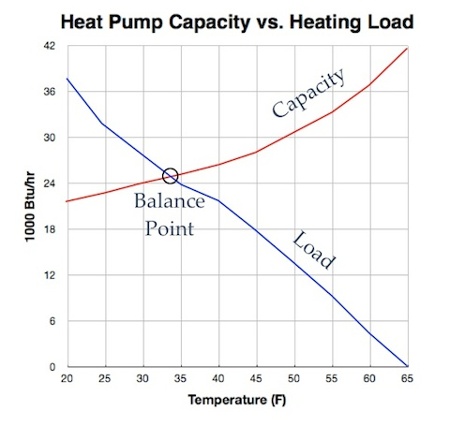
 |
|
|
#35 | |
|
Supreme EcoRenovator
|
Quote:
To answer your question, the point where heat sources should switch is unique to each installation. It is known as the balance point, and can be calculated. Where the balance point lies depends on the design of the heat pump as well as the backup heat source. To further detail the answer, there are two different balance points that exist: capacity balance and economic balance. In today's economy, natural gas is very economical, so when your backup heat source is gas, the balance point will be at a higher temperature than when it is a resistance heating element. Gas furnaces also vary in efficiency, so a more efficient gas furnace will have a little bit higher balance point than a less efficient furnace. This is an economic balance point shift based on cost. On the capacity balance side, the point where the heat load of the house equals the capacity of the heat pump determines the capacity balance point temperature. With an all electric system, it is better not to run it in emergency heat mode at all unless the outdoor unit has failed. Even at Sub-Zero temps, the heat pump is still providing capacity to heat the home. When the outdoor unit takes a long time to satisfy the load, the thermostat kicks on the aux heat strips to help out. In emergency mode, the outdoor unit is shut down, and the heating capacity it provides is lost. As shown in the graph below, the auxiliary heat strip in a standard heat pump air handler has to carry more of the load as the temperature drops. Even though the outdoor unit is running at diminished capacity and high cost, the heat load is enormous and every little bit counts when you are trying not to freeze to death.  Calculating the balance point of heating a home is not a trivial affair. The more that is known about everything, the better the system will perform. Last edited by jeff5may; 01-28-18 at 12:01 PM.. Reason: Spelling words and so forth |
|
|
|

|
| Tags |
| air conditioner, beginner, guide, heat pump, learn |
|
|